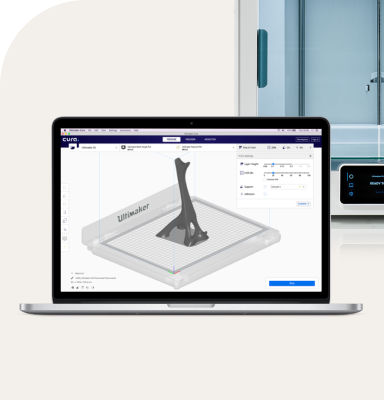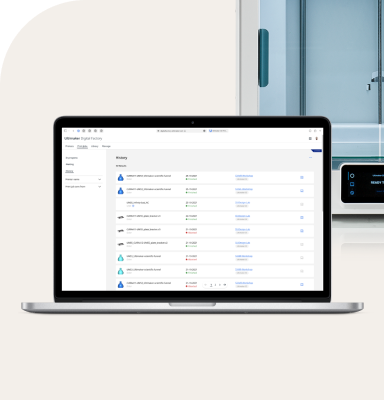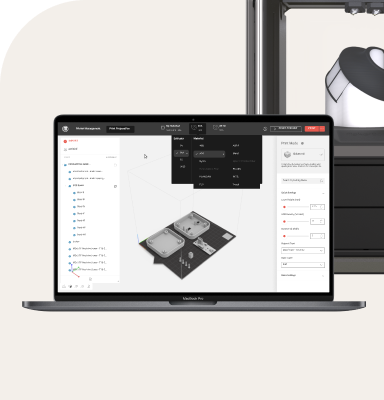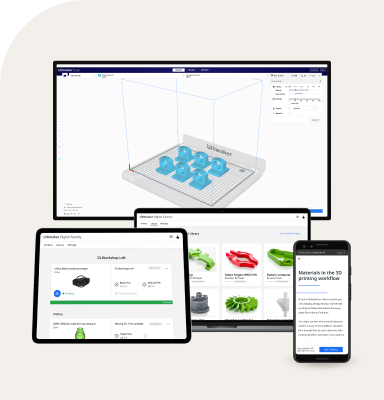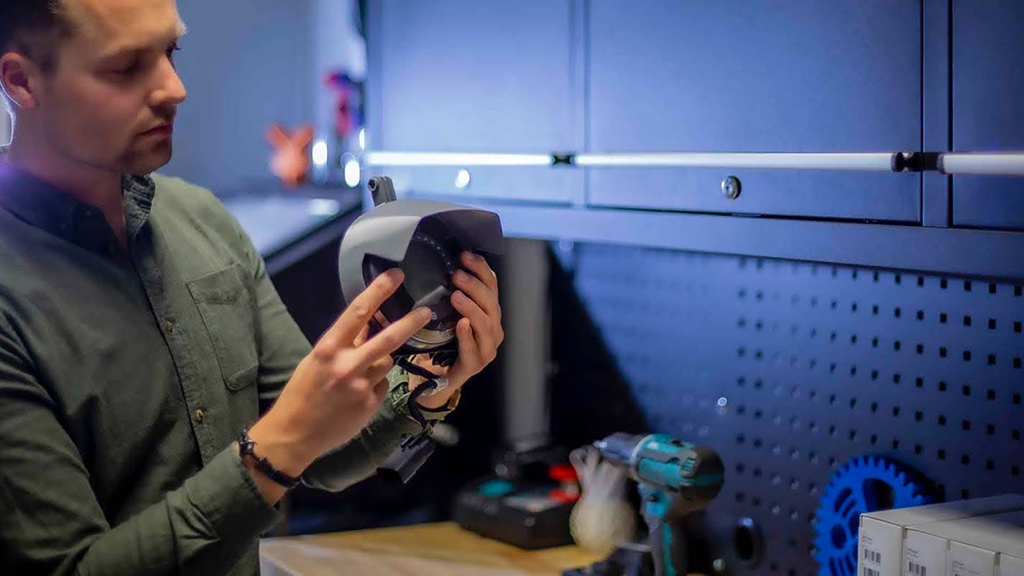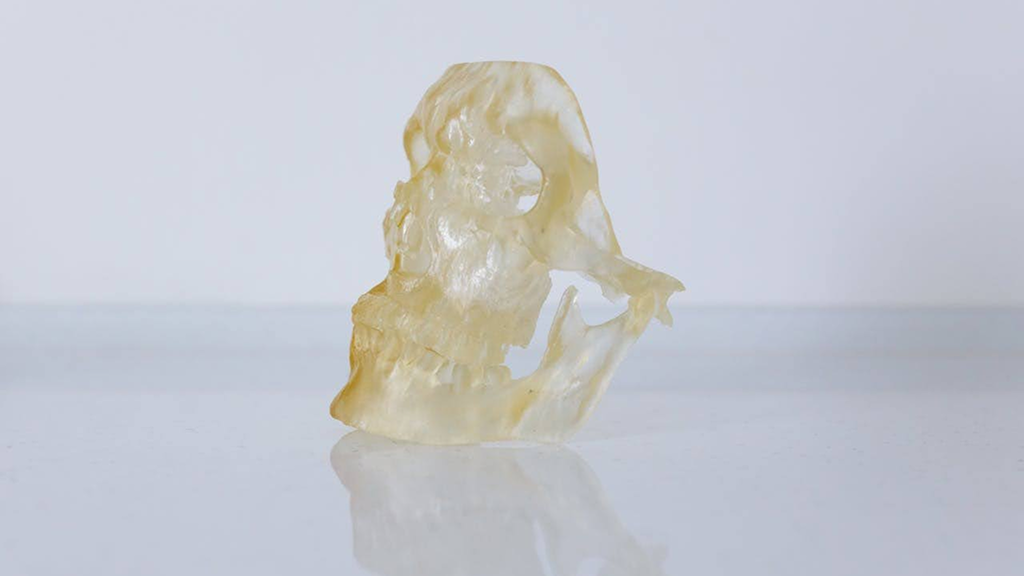PETG vs PLA - key differences in strength and properties
Building on our understanding of 3D printing materials, let's delve deeper into the specific strengths and properties of PETG and PLA. When comparing PETG vs PLA*, there are several key differences to consider:
Tensile strength
PLA typically has a higher tensile strength than PETG, with values around 50-60 MPa compared to 40-50 MPa for PETG. This means PLA can withstand greater pulling forces before breaking. However, PETG is stronger than PLA in other important ways.
Impact resistance
PETG has significantly better impact resistance than PLA. It is less brittle and can absorb more energy from sudden impacts without shattering. This makes PETG more suitable for parts that may experience shocks or drops.
Flexibility
PETG is more flexible than PLA, with a lower flexural modulus. This allows PETG parts to bend slightly under load without breaking, while PLA tends to be more rigid.
Temperature resistance
PETG has a higher heat deflection temperature than PLA, typically around 70°C compared to 55°C for PLA. This means PETG parts can withstand higher temperatures before deforming.
Chemical resistance
PETG offers better resistance to chemicals, oils, and UV light compared to PLA. This makes it more suitable for outdoor use or applications involving exposure to solvents.
Layer adhesion
PETG generally has stronger layer adhesion than PLA, resulting in parts with better strength between printed layers. This can lead to improved overall part strength, especially for loads applied perpendicular to the print layers.
Printability
While both materials are relatively easy to print, PLA is generally considered easier to work with. It has a lower printing temperature, less tendency to warp, and doesn't require a heated bed. PETG can be more challenging but offers better strength and durability in the final parts.
In summary, while PLA has higher tensile strength, PETG is stronger than PLA in terms of impact resistance, flexibility, temperature resistance, and overall durability. The choice between these materials depends on the specific requirements of the application, balancing factors like strength, ease of printing, and environmental conditions. To learn more about the strongest 3D printing materials available, you can explore this comprehensive guide.
PLA vs ABS vs PETG - comprehensive strength analysis
Now that we've compared PETG and PLA, let's expand our analysis to include ABS, providing a comprehensive comparison of these three popular 3D printing materials. When comparing the strength characteristics of PLA vs ABS vs PETG, it's important to consider multiple factors that contribute to overall material performance.
Tensile strength
PLA typically exhibits the highest tensile strength of the three materials, with values around 50-60 MPa. PETG follows closely behind at 40-50 MPa, while ABS has the lowest tensile strength at 34-36 MPa. This means PLA can withstand greater pulling forces before breaking. However, tensile strength alone does not tell the full story of material performance.
Impact resistance
When it comes to impact resistance, ABS is stronger than PLA. ABS has superior toughness and can absorb more energy from sudden impacts without shattering. PETG falls between PLA and ABS in terms of impact strength, offering a good balance of properties. This makes ABS and PETG better choices for parts that may experience shocks or drops.
Heat resistance
ABS demonstrates the highest heat resistance of the three materials, with a heat deflection temperature around 98°C. PETG follows with a heat deflection temperature of about 70°C, while PLA has the lowest at approximately 55°C. This means ABS parts can maintain their structural integrity at higher temperatures compared to PETG and PLA.
Layer adhesion
PETG generally exhibits the strongest layer adhesion, resulting in parts with better strength between printed layers. This can lead to improved overall part strength, especially for loads applied perpendicular to the print layers. ABS typically has good layer adhesion as well, while PLA can sometimes struggle with layer bonding, particularly at lower print temperatures.
Flexibility and ductility
Of the three materials, PETG offers the best balance of strength and flexibility. It can bend slightly under load without breaking, making it suitable for applications requiring some give. ABS is also relatively flexible, while PLA tends to be more rigid and brittle.
Chemical resistance
ABS and PETG both offer good resistance to many chemicals and solvents, outperforming PLA in this aspect. This makes them more suitable for parts that may come into contact with various substances or be used in outdoor environments.
Printability and strength optimization
While material properties are crucial, the strength of 3D printed parts also depends heavily on print settings and design considerations:
- PLA is the easiest to print, allowing for higher quality prints that can maximize its inherent strength
- ABS requires higher temperatures and can be prone to warping, but proper print settings can yield very strong parts
- PETG strikes a balance between ease of printing and strength, often producing robust parts with minimal tweaking
In conclusion, when considering PLA vs ABS vs PETG for strength-critical applications, each material has its strengths and weaknesses. PLA offers high tensile strength and ease of printing, ABS provides good impact resistance and heat tolerance, while PETG balances strength, flexibility, and printability.
The choice between these materials should be based on the specific requirements of the intended application, taking into account factors such as expected loads, environmental conditions, and ease of manufacturing.
| Property
|
PLA
|
PETG
|
ABS
|
| Tensile Strength (MPa)
|
50-60
|
40-50
|
34-36
|
| Impact Resistance
|
Low
|
Medium
|
High
|
| Flexibility
|
Low
|
Medium
|
Medium
|
| Heat Resistance (°C)
|
~55°C
|
~70°C
|
~98°C
|
| Layer Adhesion
|
Medium
|
High
|
Medium
|
| Chemical Resistance
|
Low
|
High
|
Medium
|
| Ease of Printing
|
Easy
|
Moderate
|
Difficult
|
For a deeper dive into material properties and strengths, you can check out this detailed comparison.
Understanding tensile strength in 3D printing
Having compared the overall strength characteristics of PLA, ABS, and PETG, let's focus on one of the most important metrics: tensile strength. Tensile strength is a crucial property to consider when evaluating the performance of 3D printer filaments. It measures the maximum stress a material can withstand while being stretched or pulled before breaking. For 3D printed parts, high tensile strength indicates better resistance to forces that try to pull the object apart.
When comparing different filament materials, tensile strength is typically measured in megapascals (MPa). Based on available data, here is a general 3D printer filament strength chart showing approximate tensile strength values for common materials:
- PLA: 50-60 MPa
- PETG: 40-50 MPa
- ABS: 34-36 MPa
- Nylon: 50-80 MPa
- Polycarbonate (PC): 60-70 MPa
It's important to note that PLA tensile strength is surprisingly high compared to other common filaments. However, PLA is also quite brittle, so it may not be suitable for applications requiring flexibility or impact resistance despite its high tensile strength. To learn more about the strength of different filaments and how they compare, you can explore this detailed strength comparison.
Factors that can affect the tensile strength of 3D printed parts include:
- Print orientation - Parts are typically strongest when forces align with the layer direction
- Layer adhesion - Poor layer bonding reduces overall part strength
- Infill percentage - Higher infill generally increases strength
- Print temperature - Proper temperature improves layer fusion and strength
- Cooling rate - Controlled cooling can enhance crystallization and strength in some materials
For applications requiring maximum tensile strength, materials like nylon, polycarbonate, or carbon fiber composites are often preferred. However, these can be more challenging to print compared to PLA or PETG. The ideal material choice depends on balancing strength requirements with other factors like printability, cost, and post-processing needs.
PETG vs PLA Plus - enhanced strength options
While we've discussed standard PLA and PETG, it's worth exploring enhanced versions of these materials that offer improved strength characteristics. When comparing PETG vs PLA Plus, both materials offer enhanced strength over standard PLA, but with some key differences:
Tensile strength
PLA Plus typically has a higher tensile strength than PETG, with values around 60-65 MPa compared to 50-55 MPa for PETG. This means PLA Plus can withstand greater pulling forces before breaking.
Impact resistance
PETG is stronger than PLA Plus when it comes to impact resistance. PETG has better toughness and can absorb more energy from sudden impacts without shattering. This makes PETG more suitable for parts that may experience shocks or drops.
Temperature resistance
PETG has a higher heat deflection temperature than PLA Plus, typically around 70°C compared to 55-60°C for PLA Plus. This allows PETG parts to withstand higher temperatures before deforming.
Chemical resistance
PETG offers superior chemical resistance compared to PLA Plus. It can better withstand exposure to various solvents, oils, and other chemicals without degrading.
Printability
PLA Plus retains much of the easy printability of standard PLA, with low warping and good bed adhesion. PETG can be slightly more challenging to print, often requiring higher temperatures and more careful cooling control.
Applications
When considering PLA Plus vs PETG for a project:
- Choose PLA Plus for parts needing high tensile strength and easy printability
- Opt for PETG when impact resistance, temperature resistance, or chemical resistance are priorities
Both materials offer significant improvements over standard PLA for functional parts, with the best choice depending on the specific requirements of your application.


